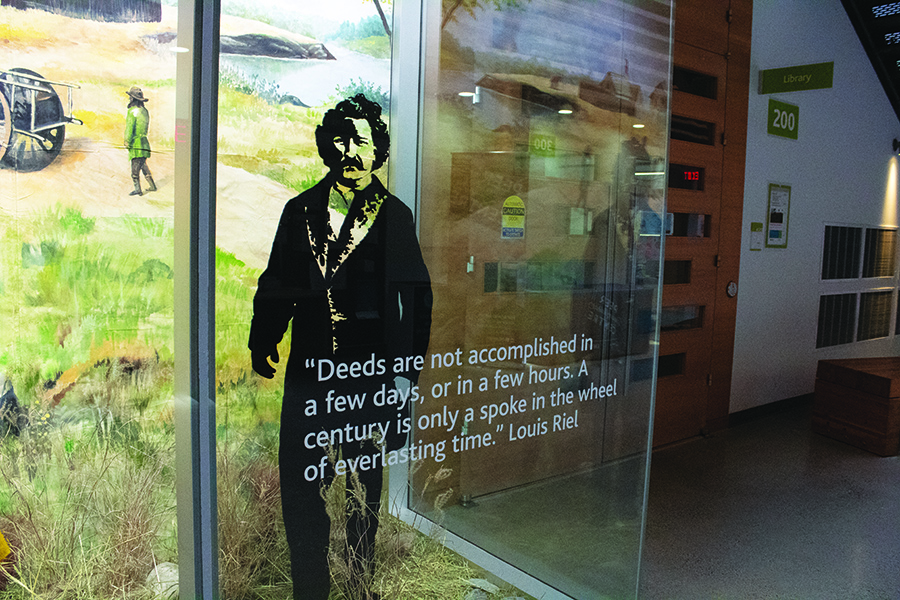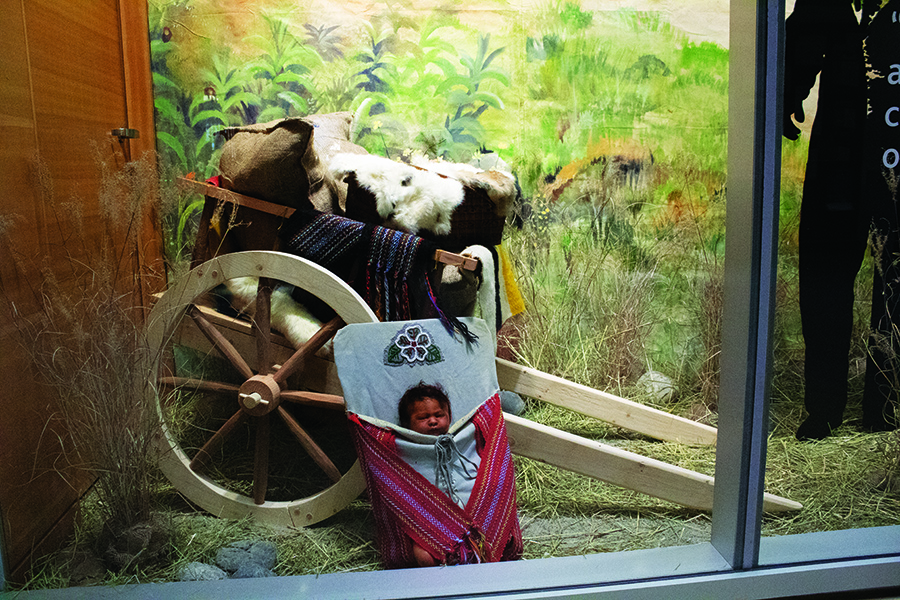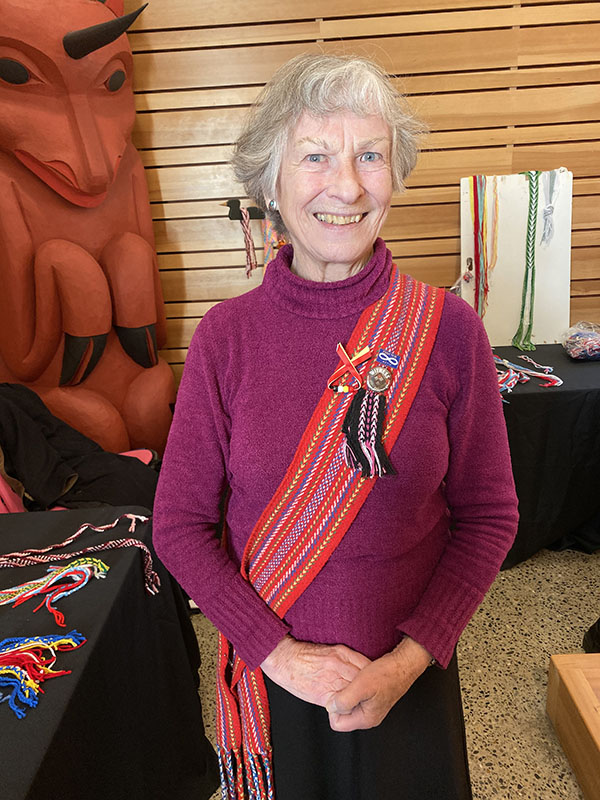UFV’s annual Métis Awareness Day returned on Tuesday, Oct. 29 to the Chilliwack campus from 10:00 a.m. to 2:00 p.m.
The celebration included guest speakers, beadwork, finger weaving, a display of Métis artifacts, a bison stew lunch, door prizes, and jigging performances hosted in the Gathering Place.
Eddie Gardner, UFV’s Elder in Residence, operated as MC for the event, explaining that the unique architecture of the Gathering Place is built similarly to a Stó:l? long house, which would traditionally have dirt floors to symbolize connection to Mother Earth.
Métis Awareness Day reserves time to celebrate the rich, blended history of Indigenous and European roots, but it also brings attention to the sordid history of Canada’s erasure, assimilation, and genocide of both Métis and First Nations peoples.
Deni Paquette, an Indigenous awareness facilitator from the Langley school district, delivered a detailed account of Métis origin and significance: how their culture was shaped, abused, and eventually reconciled. Paquette specializes in flower beadwork, a distinct Métis style of art, and offered a workshop at the event to teach students and attendees how to craft their own flowers to take home. She explained the history of this beadwork: how young Métis women would knit them for the Catholic Church, who in turn would sell them back to Europe for a considerably high price. These profits, of course, never made their way back into the pockets of the artists.
“We were born of two cultures: the red and the white. Our legacy is to pull those cultures together, forever. We will never be driven off [our] land, and we will never be subjugated,” Rene Inkster said as the final note of her speech. Inkster is a Métis Elder and seventh generation Métis woman.
At her finger weaving station, Inkster explained the significance of the colours woven in the Métis sashes, worn by several Métis attendees. The dominant red colour in the sash represents the wearer’s Métis identity. In a traditional sash, there are four rows of colours repeated within the red sash that represent the reconciliation of Métis identity: blue is for French heritage and Father Sky; white demonstrates connection to their creator; green is for the dawn of a new culture (Métis) and the grass of the Earth; and yellow represents the sun and the Métis people who were omitted from recognition and formal identity. In honour of the missing and murdered Indigenous women, Inkster had a special sash of black, white, and pink threads on display, worn by those fighting to bring justice to those women.
In the UFV Chilliwack library, a display of the Red River Cart and Louis Riel was assembled by various local artists, including Pat Calihou, keynote speaker and local Métis artist. He constructed the cart and helped explain the significance of this display during his keynote speech. The Red River Rebellion (1869 – 1870) is a pivotal sequence in Métis history; it was an uprising of Métis people against Confederate control and eventually led to the formation of Manitoba under the leadership of Louis Riel. Calihou often recreates these carts, determined to make them as historically accurate as supplies and measurements will allow.


He also gave an account of his family’s ancestry, and the hardships he encountered trying to build that history.
“We were the forgotten ones,” Calihou said.
As the cultural celebration came to a close, Fergus Dalton, a Métis jigger, performed one last jig entitled the Orange Blossom Surprise, a competition between fiddler and jigger that grows increasingly complex as each tries to tire out the other. Jigging is a traditional style of dance paired with folk music and wooden spoons. Dalton’s various performances throughout the day included solo dances, as well as group numbers with participants from the audience who were taught steps and choreography on the spot before performing the dance to a jaunty song.
Betty Peters, coordinator of the Métis Awareness Day event, shared her thoughts on the value this celebration has on the student community.
“The role of the Indigenous Student Centre is to promote our local [Stó:l?] culture, but also the Métis culture. We like to have it around this time because it’s significant [for] Louis Riel Day,” Peters said.
Louis Riel Day is commemorated on Nov. 16 in honour of the Métis leader and his efforts to liberate his people.
“I’m grateful to be living and working within my own home territory,” Peters said. “It’s important for us to educate people on the acknowledgement and the history of the land. It’s all part of reconciliation, of us reconciling and doing this walk together. Moving forward.”
Peters further explained that attendance at events like this one is vital to reconciliation. Listening to the speakers, attending cultural events offered on campus, and writing assignments and research papers that focus on Métis and ***Stó:l? history are just a few ways in which students can extend allyship.
“Help with building that bridge, that understanding, with others in your family and your peers,” Peters said. “Have an open heart and an open mind.”
Image: Krystina Spracklin
Photo: Elder Rene Inkster


